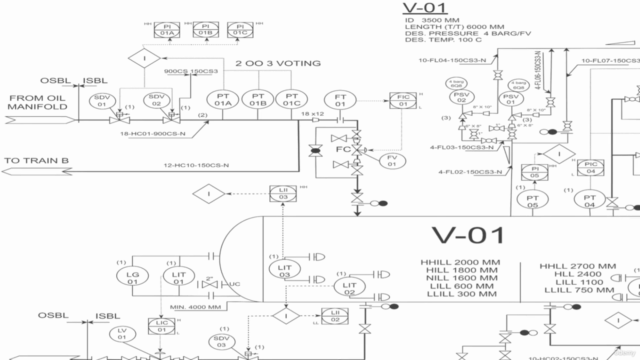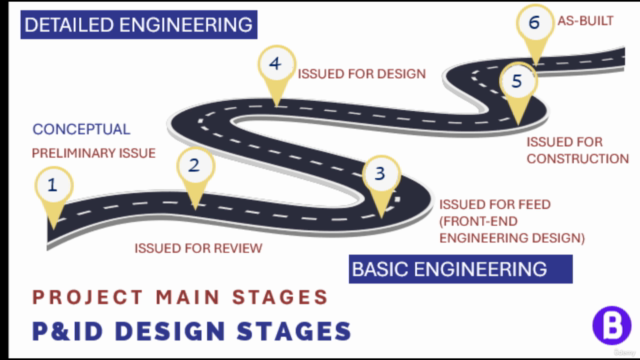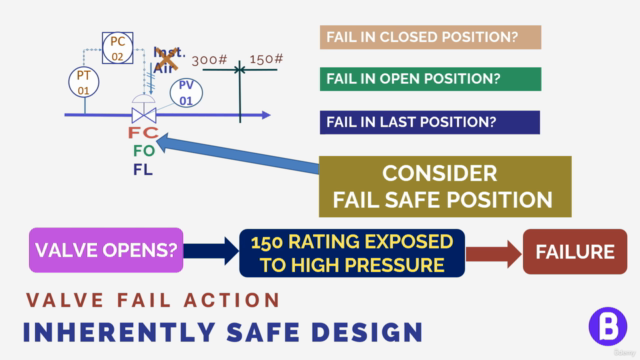P&ID Preparation Common Practices for Process Engineers

Why take this course?
🌟 Course Title: P&ID Preparation & Process Engineering: Common Practices 🚀
Headline: Discover the Details, Operation, Maintenance, and Safety Guidelines of Piping and Instrumentation Diagrams! 📐🔧⚫️
What is this Course About? 🎓
Unlock the World of P&IDs: This course isn't just about understanding how to read Piping and Instrumentation Diagrams (P&IDs). It's about delving into the 'why' behind every line, symbol, and connection. We're here to elevate your comprehension of P&IDs and their critical role in real-world industrial processes.
- Understand the Essentials: From the fundamentals to advanced concepts, we cover it all. You'll learn why each component is represented as it is on a P&ID and how these diagrams are indispensable for safe, efficient plant operations.
- Practical Knowledge: This course goes beyond theoretical knowledge. We ensure you grasp the practical applications of P&IDs in actual plant scenarios.
- Safety First: Safety practices are paramount in any process engineering field. You'll learn the safety guidelines and protocols that must be adhered to when dealing with P&IDs.
Course Overview 📈
A Deep Dive into Piping and Instrumentation Diagrams:
- Essential Topics Covered: We break down the key elements that must be included in a P&ID, from equipment to control systems. This ensures you can read and interpret these diagrams with precision and accuracy.
- P&ID Types and Anatomy: From legend to distribution and tie-in P&IDs, you'll learn about the various representations of P&IDs and understand how to apply them effectively.
- Operational and Maintenance Guidelines: Understanding isolation philosophies, maintenance requirements, and the functions of different drain systems is crucial for plant safety and efficiency. We cover it all!
- Process Safety Requirements: You'll learn about specifying proper design pressures and temperatures for equipment and piping to ensure inherent safety within the plant.
- Layers of Protection: From operator intervention to preventing and mitigating hazards, we explore how these layers are considered when preparing P&IDs to enhance overall safety.
- Risk Assessment Techniques: We delve into HAZOP and SIL assessments with practical examples, providing a solid foundation in risk management for process engineers.
Course Structure 📚
This course is structured into three comprehensive modules:
-
Applying HAZOP, SIL & Process Safety Practices on P&ID Design
- Understand the role of HAZOP and SIL in designing safe and reliable P&IDs.
-
Process Plant Monitoring, Isolation & Maintenance in a P&ID
- Learn about the monitoring systems, isolation strategies for equipment, and maintenance best practices.
-
Explore Basics, Read Piping & Instrumentation Diagrams (P&IDs)
- Gain a solid grasp of the fundamentals of reading P&IDs and understanding the intricacies involved.
Join us to unlock the secrets of P&IDs and become a proficient process engineer. With this course, you'll be equipped with the knowledge and skills needed to effectively analyze, interpret, and implement P&IDs in diverse industries, ensuring safety, efficiency, and compliance. 🛠️✅🚀
Enroll now and embark on a journey to mastering piping and instrumentation diagrams and their practical applications!
Course Gallery




Loading charts...